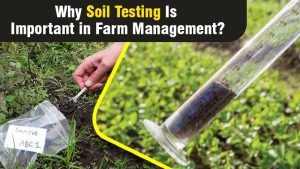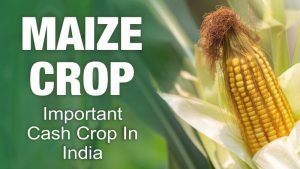History of Agroforestry:
The scientific and international development communities started to pay attention to agroforestry in the 1980s as a way to boost and sustain agricultural production in marginal lands and distant tropical regions that were not benefited by the Green Revolution. Agroforestry is currently acknowledged as having the ability to contribute significantly to sustainable land management and environmental integrity in both rich and poor countries, thanks to the research and development activities at various local, regional, and international levels.
The national gross domestic product now includes a significant contribution from the agricultural sector. The growth of agricultural areas through monoculture systems has risen as a result of the high demand for agro-based products. However, more natural forests are being turned into agricultural land as the amount of land available for farming is decreasing. Globally, the conversion has detrimental effects on the environment, such as the destruction of forests, the fragmentation of habitats, and climate change. The methods are seen as unsustainable due to environmental concerns because they have a long-term negative impact on the value of the natural environment.
As part of environmental design, agroforestry systems are studied widely in order to understand this phenomenon. The term “agroforestry systems” refers to a group of land use strategies that make the most of agricultural land to produce a variety of goods while also preserving the environment. Since they support the beneficial growth of the agriculture industry in terms of environmental, social, and economic factors, the systems are regarded as sustainable agricultural practices.
What is Agronomy?
When woody perennials (trees, shrubs, palms, bamboos, etc.) are purposefully used on the same land-management units as agricultural crops and/or animals, in some kind of spatial arrangement or temporal sequence, these systems and technologies are referred to as agroforestry. In agroforestry systems, there are interactions between the various parts on an ecological and economical level.
Impacts of Agronomy on Environment:
In addition to addressing the problems of food security and safety, the study shows that agroforestry systems have good environmental effects on soil improvement, biodiversity protection, carbon sequestration, and climate change mitigation. The four main environmental advantages of agroforestry are:
- The conservation of biodiversity,
- Soil health enhancement,
- Air and water quality improvement,
- Climate change mitigation through carbon sequestration
The economic advantages of growing numerous crops in agroforestry systems, in addition to the environmental advantages, have sparked interest in their adoption by farmers all over the world.
Plant Adaptation in Agroforestry:
Consider the several climate risks when choosing plants for an agroforestry application, including the need for winter chilling, the risk of spring freezes, heat and water stress, pollination issues, and disease and pest damage (32). When evaluating the appropriateness of species or kinds based on projected changes in temperature, precipitation, and extreme weather, tools that model future local climatic alterations can be helpful. One technique to find species that would be potentially suitable for the changing conditions is to look at plant material listings in surrounding ecoregions with present climates close to the predicted future climate of your planting location. Simply increasing plant diversity within a planting, which diversifies the mix of genetic, phenological, and physicochemical properties, is another efficient adaptation method.
Diversification:
In comparison to cropping systems that only grow annuals, agroforestry systems are multispecies mixtures of perennials and annuals that are naturally more tolerant to environmental challenges. They are more diverse in terms of species, have greater root systems that protect them from climatic extremes, and can withstand more disturbance. Perennial food crops including fruits, nuts, and berries can offer resistance to temperature extremes in areas where winter chilling requirements do not become restrictive. Mixtures of species disperse biological and monetary hazards among crops and seasons. Perennial crops, which provide continuous living cover, may be more durable and sustainable solutions on marginal areas than annual crops, which frequently need more soil disturbance.
Water Conservation:
Water conservation is greatly helped by agroforestry. Numerous studies have examined the enormous potential for water conservation and sustainability which consists of various combinations of crops and trees (rather than a single cropping system). Since agroforestry involves location-specific farming techniques, different crop combinations in various locales play a range of roles in water body conservation and cycling, which aids in the smooth operation of a given farming system in agroforestry.
Increases Infiltration Rate:
By increasing the amount of forest and tree cover that intercept rainfall, boosts the amount of rain that seeps into the ground, and lowers the quantity, speed, and peak flows of runoff, agroforestry can help landowners adapt to increasingly intense precipitation events and lessen the negative effects. Adding perennials enhanced water penetration the highest in comparison to annual crops when compared to no till, cover crops, crop and livestock integration, and crop rotation (an increase of 59 percent ). In Missouri, fields with agroforestry contour buffers experienced an annual reduction in soil loss of 28 to 30 percent.
Agroforestry systems’ potential to improve food and nutritional security:
Incorporating trees into the production of annual crops, livestock, and other farm activities is known as agroforestry, and more than 1.2 billion people throughout the world use it as one of their land management practises. When they are properly handled, integration of numerous components that fill complimentary niches and their associations boosts farm productivity. From broad parkland assemblages and dense tropical rainforests to trees planted in hedges or on the boundaries of fields and farms, agroforestry systems can range in structure and layout. Agroforestry systems offer a variety of goods and services that are crucial locally, nationally, and internationally, but their importance is never completely recognised when policies are being developed, reflecting the numerous, hard-to-measure ways that trees affect people’s lives.
Visit the Khetiguru mobile application for more information on agroforestry.
Learn more about tractors, tractor prices, tractor videos, and tractor games at khetigaadi.com.




